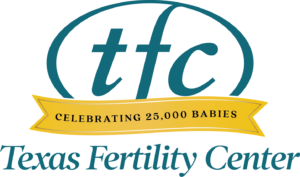
IVF embryo transfer is an important step of the IVF process
An IVF embryo transfer is an exciting part of your fertility journey. Your doctor and nurse will work with you to optimize your uterus prior to your embryo transfer at our San Antonio IVF clinic.
A look at each type of IVF embryo transfer
IVF embryo transfers using fresh embryos are occasionally performed by the team at our San Antonio IVF clinic. These transfers are done five days after the egg retrieval.
Most IVF embryo transfers at our San Antonio clinic are done with frozen (cryopreserved) embryos. There are multiple reasons for this.
- During an IVF cycle, a hormone called progesterone can increase temporarily. This can make the uterus less likely to allow a fresh embryo to attach to it.
- Many patients are choosing to have preimplantation genetic testing done for their embryos. This testing requires freezing of the embryos.
- The process of freezing has improved dramatically over the years. Vitrification is a quick and safe method of freezing embryos. IVF embryo transfers with vitrified embryos may lead to higher pregnancy rates than IVF embryo transfers with fresh embryos.
A look at the IVF embryo transfer process
On the day of your IVF embryo transfer, you will come to the surgery center at our San Antonio IVF clinic about an hour before your scheduled procedure. During this time, you will complete paperwork, change your clothes, and talk to your embryologist and physician about the embryo(s) and ask any questions you may have before the procedure. If you have someone to drive you home after the procedure, you may also receive a medication to help you relax during the transfer.
For the IVF embryo transfer, you will be brought back to the procedure room. You are welcome to bring your partner, friend or family member to be with you during this special time. You will be positioned similar to when you get a Pap smear. A speculum is placed in the vagina and a tiny catheter is placed in the uterus. The embryo is then gently placed near the top of the uterus as your doctor watches with an abdominal ultrasound.
Because of the use of the ultrasound, you are asked to come to the procedure with a relatively full bladder. The catheter is then brought back into the lab and checked for any retained embryos. You will then be brought back to your room and discharged home. You will undergo your first pregnancy test nine to 10 days after the embryo transfer.
The number of embryos transferred at the time of IVF embryo transfer has changed over the years as technology has improved and pregnancy rates have significantly increased. The American Society for Reproductive Medicine (ASRM) recommends single embryo transfers (SET) for all embryos tested with preimplantation genetic testing (PGT-A) and for other patients with a good prognosis.
All of the physicians at our San Antonio IVF clinic want both a healthy mother and a healthy baby. The best way to help ensure that outcome is one baby at a time. If you have any questions about IVF embryo transfer, please contact our office.



